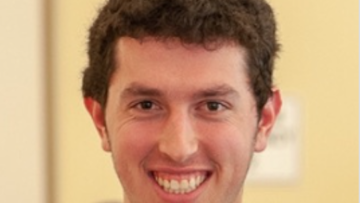16:00
The Cardy-like limit of the N=1 superconformal index
Abstract
I will give a pedagogical introduction to the Cardy-like limit of the superconformal index of N=4 SYM and generic N=1 SCFTs, highlighting its role in the holographic dual black hole microstate counting problem.
On the dynamics and rigidity of 3D incompressible MHD equations
Abstract
The Alfven waves are fundamental wave phenomena in magnetized plasmas and the dynamics of Alfven waves are governed by the MHD system. In the talk, we construct and study the long time behavior of (viscous and non-viscous) Alfven waves.
As applications, (1) We provide a rigorous justification for the following dynamical phenomenon observed in many contexts: the solution at the beginning behave like non-dispersive waves and the shape of the solution persists for a very long time (proportional to the Reynolds number); thereafter, the solution will be damped due to the long-time accumulation of the diffusive effects;
(2) We prove the rigidity aspects of the scattering problem for the MHD equations: We prove that the Alfven waves must vanish if their scattering fields vanish at infinities.
Willmore Flow of Tori of Revolution
Abstract
There is a striking relationship between Willmore surfaces of revolution and elastic curves in hyperbolic half-space. Here the term elastic curve refer to a critical point of the energy given by the integral of the curvature squared. In the talk we will discuss this relationship and use it to study long-time existence and asymptotic behavior for the L2-gradient flow of the Willmore energy, under the condition that the initial datum is a torus of revolution. As in the case of Willmore flow of spheres, we show that if an initial datum has Willmore energy below 8 \pi then the solution of the Willmore flow converges to the Clifford Torus, possibly rescaled and translated. The energy threshold of 8 \pi turns out to be optimal for such a convergence result.
The lecture is based on joint work with M. Müller (Univ. Freiburg), R. Schätzle (Univ. Tübingen) and A. Spener (Univ. Ulm).
17:00
Existential Closedness in Arithmetic Geometry
Abstract
There are many open conjectures about the algebraic behaviour of transcendental functions in arithmetic geometry, one of which is the Existential Closedness problem. In this talk I will review recent developments made on this question: the cases where we have unconditional existence of solutions, the conditional existence of generic solutions (depending on the conjecture of periods and Zilber-Pink), and even a few cases of unconditional existence of generic solutions. Many of the results I will mention are joint work with (different subsets of) Vahagn Aslanyan, Jonathan Kibry, Sebastián Herrero, and Roy Zhao.
16:00
Gluon Scattering in AdS from CFT
Abstract
In this talk, I will discuss AdS super gluon scattering amplitudes in various spacetime dimensions. These amplitudes are dual to correlation functions in a variety of non-maximally supersymmetric CFTs, such as the 6d E-string theory, 5d Seiberg exceptional theories, etc. I will introduce a powerful method based on symmetries and consistency conditions, and show that it fixes all the infinitely many four-point amplitudes at tree level. I will also point out many interesting properties and structures of these amplitudes, which include the flat space limit, Parisi-Sourlas-like dimensional reduction, hidden conformal symmetry, and a color-kinematic duality in AdS. Along the way, I will also review some earlier progress and the relation with this work. I will conclude with a brief discussion of various open problems.
Representations and Characters of GLn(Fq)
Abstract
The classification of finite simple groups shows that many (those of Lie type) are obtained as (projectivisations of) subgroups of some $GL_{n}(\mathbb{F}_{q})$.
Green first determined the character table of any $GL_{n}(\mathbb{F}_{q})$ in his influential 1955 paper, while others have since given more explicit constructions of certain `cuspidal' representations.
In this talk, I will introduce parabolic induction as a means of obtaining representations of $GL_{n}(\mathbb{F}_{q})$ from those of $GL_{m}(\mathbb{F}_{q})$ where $m<n$.
Finding the irreducible representations of any $GL_{n}(\mathbb{F}_{q})$ then becomes inductive on $n$ for fixed $q$, with the cuspidal representations serving as atoms for this process.
Harish-Chandra's philosophy of cusp forms reduces the problem to the following two steps:
- Find the cuspidal representations of any $GL_{n}(\mathbb{F}_{q})$
- Determine the irreducible components of any representation $\sigma_{1}\circ\dots\circ\sigma_{k}$ parabolically induced from cuspidals $\sigma_{i}$
The majority of my talk will then aim to address each of these points.


